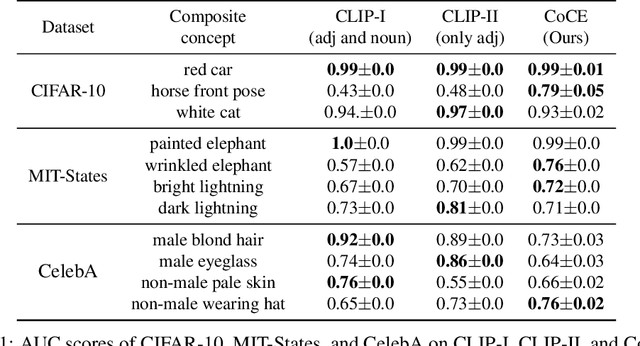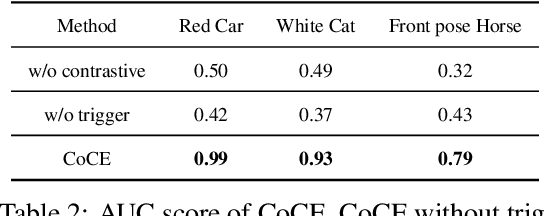Khoa D Doan
pFedDSH: Enabling Knowledge Transfer in Personalized Federated Learning through Data-free Sub-Hypernetwork
Aug 07, 2025Abstract:Federated Learning (FL) enables collaborative model training across distributed clients without sharing raw data, offering a significant privacy benefit. However, most existing Personalized Federated Learning (pFL) methods assume a static client participation, which does not reflect real-world scenarios where new clients may continuously join the federated system (i.e., dynamic client onboarding). In this paper, we explore a practical scenario in which a new batch of clients is introduced incrementally while the learning task remains unchanged. This dynamic environment poses various challenges, including preserving performance for existing clients without retraining and enabling efficient knowledge transfer between client batches. To address these issues, we propose Personalized Federated Data-Free Sub-Hypernetwork (pFedDSH), a novel framework based on a central hypernetwork that generates personalized models for each client via embedding vectors. To maintain knowledge stability for existing clients, pFedDSH incorporates batch-specific masks, which activate subsets of neurons to preserve knowledge. Furthermore, we introduce a data-free replay strategy motivated by DeepInversion to facilitate backward transfer, enhancing existing clients' performance without compromising privacy. Extensive experiments conducted on CIFAR-10, CIFAR-100, and Tiny-ImageNet demonstrate that pFedDSH outperforms the state-of-the-art pFL and Federated Continual Learning baselines in our investigation scenario. Our approach achieves robust performance stability for existing clients, as well as adaptation for new clients and efficient utilization of neural resources.
HFedATM: Hierarchical Federated Domain Generalization via Optimal Transport and Regularized Mean Aggregation
Aug 07, 2025Abstract:Federated Learning (FL) is a decentralized approach where multiple clients collaboratively train a shared global model without sharing their raw data. Despite its effectiveness, conventional FL faces scalability challenges due to excessive computational and communication demands placed on a single central server as the number of participating devices grows. Hierarchical Federated Learning (HFL) addresses these issues by distributing model aggregation tasks across intermediate nodes (stations), thereby enhancing system scalability and robustness against single points of failure. However, HFL still suffers from a critical yet often overlooked limitation: domain shift, where data distributions vary significantly across different clients and stations, reducing model performance on unseen target domains. While Federated Domain Generalization (FedDG) methods have emerged to improve robustness to domain shifts, their integration into HFL frameworks remains largely unexplored. In this paper, we formally introduce Hierarchical Federated Domain Generalization (HFedDG), a novel scenario designed to investigate domain shift within hierarchical architectures. Specifically, we propose HFedATM, a hierarchical aggregation method that first aligns the convolutional filters of models from different stations through Filter-wise Optimal Transport Alignment and subsequently merges aligned models using a Shrinkage-aware Regularized Mean Aggregation. Our extensive experimental evaluations demonstrate that HFedATM significantly boosts the performance of existing FedDG baselines across multiple datasets and maintains computational and communication efficiency. Moreover, theoretical analyses indicate that HFedATM achieves tighter generalization error bounds compared to standard hierarchical averaging, resulting in faster convergence and stable training behavior.
FLAT: Latent-Driven Arbitrary-Target Backdoor Attacks in Federated Learning
Aug 06, 2025Abstract:Federated learning (FL) is vulnerable to backdoor attacks, yet most existing methods are limited by fixed-pattern or single-target triggers, making them inflexible and easier to detect. We propose FLAT (FL Arbitrary-Target Attack), a novel backdoor attack that leverages a latent-driven conditional autoencoder to generate diverse, target-specific triggers as needed. By introducing a latent code, FLAT enables the creation of visually adaptive and highly variable triggers, allowing attackers to select arbitrary targets without retraining and to evade conventional detection mechanisms. Our approach unifies attack success, stealth, and diversity within a single framework, introducing a new level of flexibility and sophistication to backdoor attacks in FL. Extensive experiments show that FLAT achieves high attack success and remains robust against advanced FL defenses. These results highlight the urgent need for new defense strategies to address latent-driven, multi-target backdoor threats in federated settings.
LLM-SRBench: A New Benchmark for Scientific Equation Discovery with Large Language Models
Apr 14, 2025Abstract:Scientific equation discovery is a fundamental task in the history of scientific progress, enabling the derivation of laws governing natural phenomena. Recently, Large Language Models (LLMs) have gained interest for this task due to their potential to leverage embedded scientific knowledge for hypothesis generation. However, evaluating the true discovery capabilities of these methods remains challenging, as existing benchmarks often rely on common equations that are susceptible to memorization by LLMs, leading to inflated performance metrics that do not reflect discovery. In this paper, we introduce LLM-SRBench, a comprehensive benchmark with 239 challenging problems across four scientific domains specifically designed to evaluate LLM-based scientific equation discovery methods while preventing trivial memorization. Our benchmark comprises two main categories: LSR-Transform, which transforms common physical models into less common mathematical representations to test reasoning beyond memorized forms, and LSR-Synth, which introduces synthetic, discovery-driven problems requiring data-driven reasoning. Through extensive evaluation of several state-of-the-art methods, using both open and closed LLMs, we find that the best-performing system so far achieves only 31.5% symbolic accuracy. These findings highlight the challenges of scientific equation discovery, positioning LLM-SRBench as a valuable resource for future research.
Towards Clean-Label Backdoor Attacks in the Physical World
Jul 27, 2024Abstract:Deep Neural Networks (DNNs) are vulnerable to backdoor poisoning attacks, with most research focusing on digital triggers, special patterns digitally added to test-time inputs to induce targeted misclassification. In contrast, physical triggers, which are natural objects within a physical scene, have emerged as a desirable alternative since they enable real-time backdoor activations without digital manipulation. However, current physical attacks require that poisoned inputs have incorrect labels, making them easily detectable upon human inspection. In this paper, we collect a facial dataset of 21,238 images with 7 common accessories as triggers and use it to study the threat of clean-label backdoor attacks in the physical world. Our study reveals two findings. First, the success of physical attacks depends on the poisoning algorithm, physical trigger, and the pair of source-target classes. Second, although clean-label poisoned samples preserve ground-truth labels, their perceptual quality could be seriously degraded due to conspicuous artifacts in the images. Such samples are also vulnerable to statistical filtering methods because they deviate from the distribution of clean samples in the feature space. To address these issues, we propose replacing the standard $\ell_\infty$ regularization with a novel pixel regularization and feature regularization that could enhance the imperceptibility of poisoned samples without compromising attack performance. Our study highlights accidental backdoor activations as a key limitation of clean-label physical backdoor attacks. This happens when unintended objects or classes accidentally cause the model to misclassify as the target class.
Non-Cooperative Backdoor Attacks in Federated Learning: A New Threat Landscape
Jul 05, 2024



Abstract:Despite the promise of Federated Learning (FL) for privacy-preserving model training on distributed data, it remains susceptible to backdoor attacks. These attacks manipulate models by embedding triggers (specific input patterns) in the training data, forcing misclassification as predefined classes during deployment. Traditional single-trigger attacks and recent work on cooperative multiple-trigger attacks, where clients collaborate, highlight limitations in attack realism due to coordination requirements. We investigate a more alarming scenario: non-cooperative multiple-trigger attacks. Here, independent adversaries introduce distinct triggers targeting unique classes. These parallel attacks exploit FL's decentralized nature, making detection difficult. Our experiments demonstrate the alarming vulnerability of FL to such attacks, where individual backdoors can be successfully learned without impacting the main task. This research emphasizes the critical need for robust defenses against diverse backdoor attacks in the evolving FL landscape. While our focus is on empirical analysis, we believe it can guide backdoor research toward more realistic settings, highlighting the crucial role of FL in building robust defenses against diverse backdoor threats. The code is available at \url{https://anonymous.4open.science/r/nba-980F/}.
Composite Concept Extraction through Backdooring
Jun 19, 2024



Abstract:Learning composite concepts, such as \textquotedbl red car\textquotedbl , from individual examples -- like a white car representing the concept of \textquotedbl car\textquotedbl{} and a red strawberry representing the concept of \textquotedbl red\textquotedbl -- is inherently challenging. This paper introduces a novel method called Composite Concept Extractor (CoCE), which leverages techniques from traditional backdoor attacks to learn these composite concepts in a zero-shot setting, requiring only examples of individual concepts. By repurposing the trigger-based model backdooring mechanism, we create a strategic distortion in the manifold of the target object (e.g., \textquotedbl car\textquotedbl ) induced by example objects with the target property (e.g., \textquotedbl red\textquotedbl ) from objects \textquotedbl red strawberry\textquotedbl , ensuring the distortion selectively affects the target objects with the target property. Contrastive learning is then employed to further refine this distortion, and a method is formulated for detecting objects that are influenced by the distortion. Extensive experiments with in-depth analysis across different datasets demonstrate the utility and applicability of our proposed approach.
A Cosine Similarity-based Method for Out-of-Distribution Detection
Jun 23, 2023



Abstract:The ability to detect OOD data is a crucial aspect of practical machine learning applications. In this work, we show that cosine similarity between the test feature and the typical ID feature is a good indicator of OOD data. We propose Class Typical Matching (CTM), a post hoc OOD detection algorithm that uses a cosine similarity scoring function. Extensive experiments on multiple benchmarks show that CTM outperforms existing post hoc OOD detection methods.
 Add to Chrome
Add to Chrome Add to Firefox
Add to Firefox Add to Edge
Add to Edge